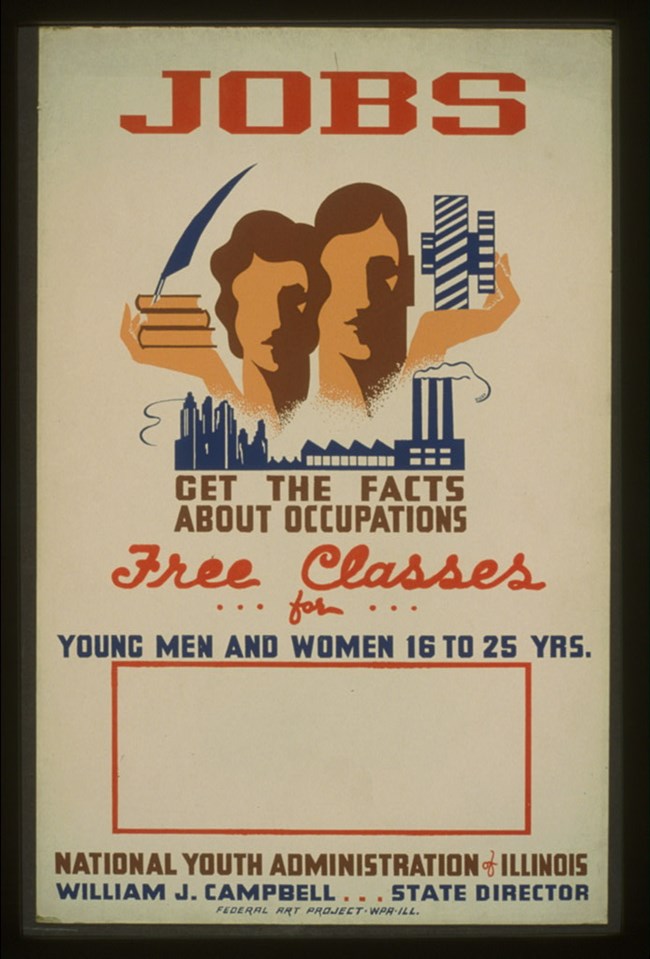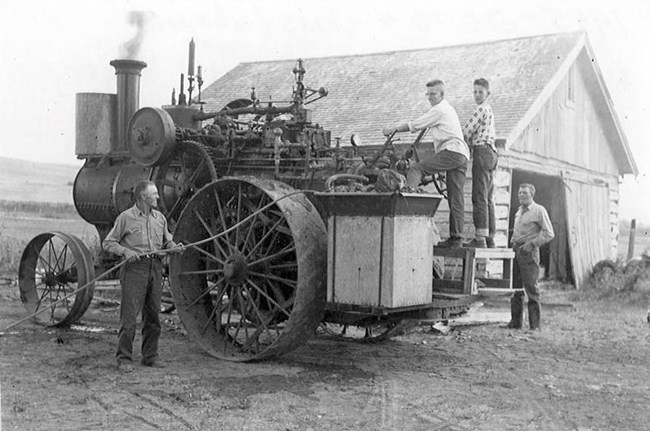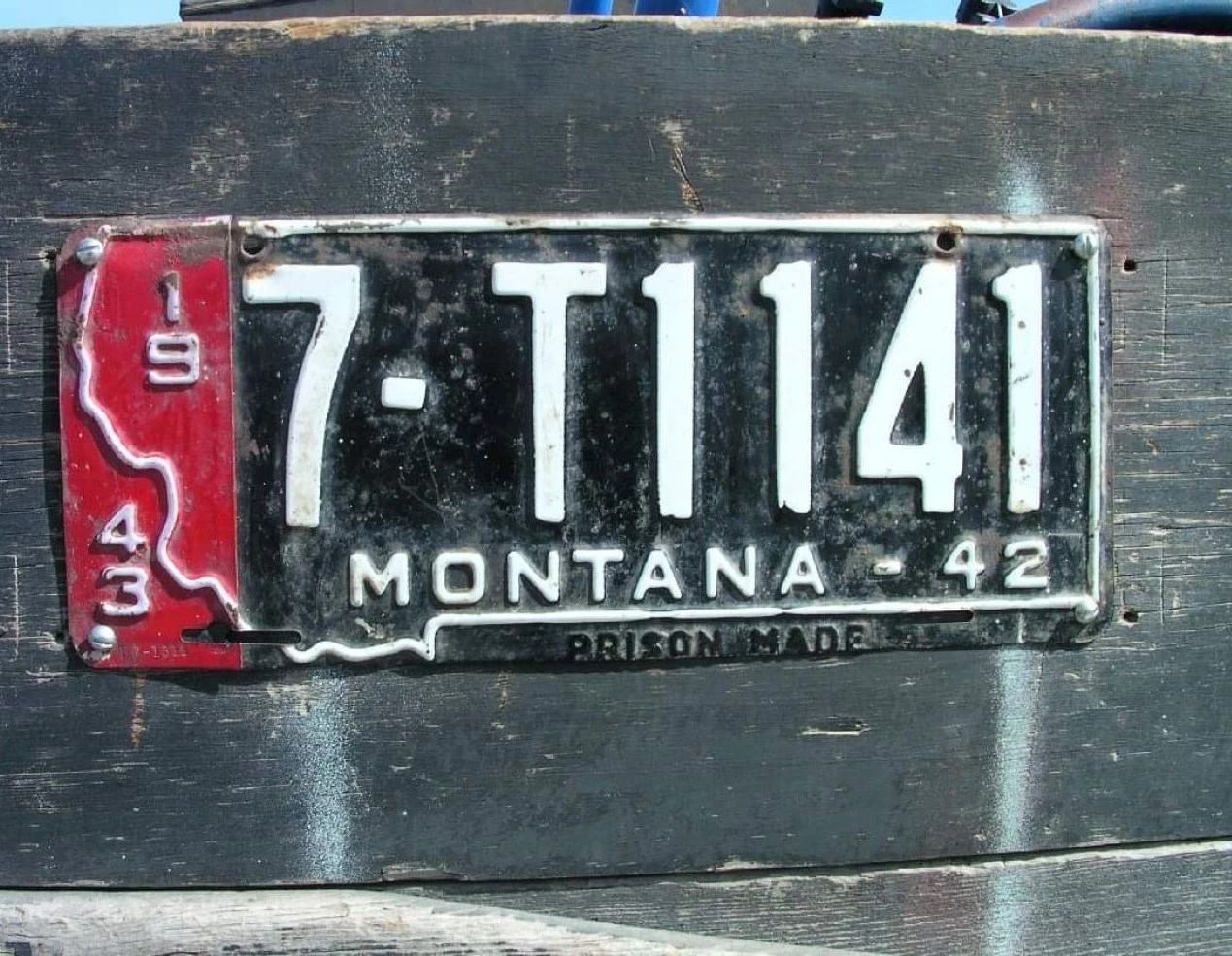Part of a series of articles titled Lewistown, Montana, WWII Heritage City Lessons.
Article
(H)our History Lesson: Home Front Experiences and Contributions by Youth in Lewistown, Montana, World War II Heritage City

Library of Congress
This lesson is part of a series teaching about the World War II home front, with Lewistown, Montana designated as an American World War II Heritage City. The lesson contains readings and photos to contribute to learners’ understandings about what it was like for children in Lewistown: to grow up on the home front and to contribute to the war effort and their community.
Objectives:
- Describe how local Lewistown youth were impacted by the war and what it was like to grow up on the home front.
- Identify ways youth contributed to the war effort and their community.
- Compare local, historical perspectives on service to synthesize and connect to larger wartime perspectives and themes.
Materials for Students:
- Photos (can be displayed digitally)
- Readings 1, 2, 3 (and optional extension)
- Recommended: Map of Montana with Lewistown marked; other airfields can also be marked.
Getting Started: Essential Question
How did the experiences of growing up on the home front in Lewistown, Montana shape the lives of local youth, and what roles did they play in contributing to the war effort and their community?
Read to Connect

Courtesy of Gary Yaeger
Reading 1: Gary Yaeger Narrative
Note: This first-person narrative was compiled and revised from communications between Sarah Nestor Lane and Gary Yaeger. Gary Yaegar was born in Lewistown, Montana and raised on his Grandpa Jäger's 1880-1881 Homestead ranch, 9 miles southwest of Lewistown on Beaver Creek. He shares memories of growing up on the home front. His cousin also trained at Lewistown Army Airfield.
Memories of the Lewistown Army Airfield
“Lewistown is the most complete B-17 base extant, according to the Montana Historical Society. Incidentally, when they took off on Runway 25 (west), they exited the Lewistown Flight Pattern over our ranch, where they turned east to head to their bombing range 12 miles north of Winnett, Montana. My older brother Bill and I used to run outside to watch those B-17s with all 36 cylinders in a full power climbing turn over our Beaver Creek Ranch: a sound I shall never forget.
I had a dear friend from Kalispell who moved to Lewistown for two years operating a Cat Road grader in the lengthening of the runways to accommodate the needed length for these bombers. This cut 85-90 miles both ways from West Base in Great Falls to Winnett. The bombing target there is still visible from space. It is the only one extant. The others around the nation got built over, paved or plowed under.
Gasoline was precious during the war. There were five huge fuel tanks that held B-17 fuel alongside the old Milwaukee Railroad where the highway overpass was until a few short years ago. The railroad delivered gasoline. I remember a little tar paper shack with a yard light outside. There was always a soldier with his rifle guarding the tanks day and night. Those soldiers were very impressive upon this boy's mind.
Childhood Memories, Rationing and License Plates
I remember the bombers, I remember trips to Lewistown in the 1937 Plymouth, and Mom read me books at night. Salty Sam the Sailor was my favorite and I was singing “Bell Bottom Trousers” (on pitch).
We had the red and blue tokens that were “change" for items that were rationed. Sugar was scarce. We had a one-acre garden and lived off the land pretty much. We boys had to help water and weed after planting. We had a root cellar and Dad used it. Lots of steam engines were scrapped during the war. I'd heard that the Barr Brothers at Hobson, Montana had "a mile" of old tractors stacked along the Great Northern Railway there. They were scrapping the tractors . . .
Wartime License Plates

Top image
Two license plates mentioned in the text: 1942 Montana license plate, made of tin.1944 Montana plate is made of soy meal.
Credit: Courtesy of Gary Yaeger
Bottom image
1943 Montana license plate is made of old 1942 license plate, to save metal.
Credit: Courtesy of Gary Yaeger

Courtesy of Gary Yaeger
Gasoline was rationed, but as farmers, our farm fuel was rationed, but it usually came through, according to Dad. The vehicle fuel was more tightly rationed. Somewhere I still have ration coupons, the red and blue tokens. Born in 1943, the pennies were zinc, not copper. I kept quite a few of them, and license plates were another thing. The photo (above) of a green 1944 Montana license plate is made of soy meal. Below is a black 1942 tin license plate. The third license plate was a 1943; they took left over 1942 plates, chopped them into nearly quarters, re-stamped them with 1943 and painted that portion red.
A local Lewistown machinery salesman had a knack for stopping at farms as the farmer's wives usually had decent meat and vegetables to serve. He would stop by a farm around 11to 11:30 A.M. to talk machinery. Farmers, being the good people they are, would ask him to stay for "Dinner" (noontime in Montana back then!). He went to a farm and got asked for dinner. When he came out, the pigs that were running loose around the buildings ate both license plates from his vehicle!
Family Service
My late brother Bill was five years older than me. He was my aircraft library! Incidentally, he ended up being a US Army Brigadier General, qualified in eight fixed-wing, multi-engine, and rotary-wing aircraft as a Master Aviator.

Courtesy of Gary Yaeger
Cousin Frank McArthur's parents lived in Great Falls. His mother Julia was Dad's older sister. Frank and his brother Raymond spent lots of time with Grandma Yaeger, Dad, and his seven brothers on Beaver Creek. Frank trained in Lewistown and flew 33 or 34 missions over Germany as a B-17 Bombardier. I'm unaware of the amount of time Frank spent training at Lewistown. He only had to fly 25 missions then could be rotated out to another theater of operation. He told his commander, "These guys are my friends and I'm staying."
After he was stationed in Germany, he had a few stories I remember. One was about the Norden Bomb Sight. When they were over target, the control of the plane was given to the bombardier. He said if their plane ever got hit and they had time, there was a canister he was to place the "top secret" bombsight into, with explosives that destroyed the sight. Frank told about doing only nighttime bombing sorties over Germany. Their fighter aircraft had a better chance against the superior German Messerschmitt fighter planes. But when America had tested and built the P-51 Mustang fighter plane, it was superior to any German fighter plan of that era. They then went to daytime bombing missions. Schweinfurt was one he really remarked on, because that city had the ball and roller bearing factory that were used in German warfare equipment: airplanes, tanks, trucks, etc. Without bearings, the rest of the huge amounts of iron were helpless. Frank was released from the Army Air Corps as a Staff Sergeant sometime after Germany surrendered. Frank stayed in central Montana as a rancher after the war. I saw him often. Our family called him a (Missouri River) "river rat."
Raymond, Frank’s brother, fought in the Battle of the Bulge and was a member of the "Rainbow Division" that helped liberate Dachau Concentration Camp, near Müenchen, or Munich, Germany. After the war, Ray went back to Great Falls and passed away about 8 years ago there.

Courtesy of Gary Yaeger
The end of the war
My mother talked to us boys each night about "The War." She was obsessed by it. But that did make me aware of what was going on with the war. Hitler and Hirohito were not nice words at our house. The Japanese did surrender on my August 14th birthday in 1945! I thought people were happy it was my birthday!
Read to Connect
Free Theater Ticket for Each Lb. Of Copper
Lewistown Democrat-News, February 2, 1943, p. 8
School-Theater Copper Scrap Drive Swings Into Action Monday; Ends Saturday
Fergus county’s school-theater copper scrap drive got away to a flying start Monday, according to Tom Dowen, chairman of the county salvage committee, who said that local school authorities reported receiving a considerable quantity of war-needed copper articles from students who, with parental cooperation, started the week’s drive off with a bang.
Through the courtesy of Manager Irving Simpson of the Judith theater, school children of the county are to receive a pass to the theater for each pound of copper turned into the schools during this week. The passes will be good for any show at the Judith up to and including Feb. 15 and the state school that turns in the highest amount of copper per scholar will be awarded a $25 prize by the state salvage department, Dowen stated.
Under this system the smallest rural school has the same opportunity to win the grand prize as the largest school-if not better—and in this connection Chairman Dowen urged that rural school teachers present the program in detail to their pupils at once.
All of the copper must be taken to the schools for checking and weighing in. The copper campaign which started Monday ends next Sunday.
Background: The National Youth Administration (N.Y.A.) was a New Deal agency sponsored by Franklin D. Roosevelt. It provided work and education for youths aged between 16 and 25. It started in 1935 and was discontinued in 1943.
Air Raid Shelter Blankets for Red Cross and Model Poultry Houses Being Made by Local N.Y.A. Youth; Some Material Needed.
Various phases of the national defense program in which efforts, abilities, and equipment of the local N.Y.A. integrate with timely fitness are now receiving the attention of Mrs. Emma Lincoln, head of the local N.Y.A. program, and the 10 boys and 10 girls of Lewistown and vicinity who are currently enrolled in the National Youth self-help movement here.
The making of raid shelter blankets for the Red Cross by the girls and miniature chicken houses as models for increased poultry and egg production for distribution over the Central Montana area to aid in the greater food for defense program are now receiving the full attention of N.Y.A. enrollees at their headquarters located in the old Presbyterian church building at the corner of Janeaux and Fifth avenue.
A visit any afternoon to this locality will find the crew of 20 young people busily engaged in carrying to successful conclusion this most worthwhile defense project handed them and prove a pleasant surprise to the visitor.
One of the chief needs at the present time, according to Mrs. Lincoln, is old coats, blankets and other wool articles which the N.Y.A girls can renovate, cut up and sew into the needed air raid shelter blankets for the Red Cross. Anyone having such articles is requested to write Mrs Emma Lincoln . . . Or leave the articles at N.Y.A. Headquarters Corner, Janeaux and Fifth. The local Red Cross chapter is furnishing the lining for the blankets. Five of the present quota of which have already been completed.
On completion of the allotted model poultry houses, the boys will next start on a similar quota of model brooders and model hog houses, all of which, when completed, will be distributed at key points throughout the Central Montana areas for study by farmers and others desiring to tie in with the Food Production for Defense program. On a recent visit to the Lewistown N.Y.A, Col. George W. Wiesel of Helena, Director of the Montana in Regulation. work program, stated that the projects being carried out by the local NYA boys and girls were by all odds the best in the state. He also highly complimented the personnel of the Lewistown group, both young and old. . . .
Quotation to consider:
“Locally the Girl Scouts are taking active leadership in the gathering of waste fats, disposing of them at the reception depots—Lewistown Grocery, Safeway Store and Pete’s Sell-Rite—and using the money received for their Girl Scout activity fund.”
--“Kitchen-Fats Week for Feb. Starts Monday: All Housewives urged to cooperate in important war effort salvage program and at same time aid local girl scout movement;” The Sunday Democrat News, January 31, 1943
Student Activities
Questions for Reading 1 and Photos
- What memories does Gary Yaeger share about the Lewistown Army Airfield and its impact on his childhood in Montana?
- What were some of the ways he remembered rationing as a child? How do you think rationing affected the lives of civilians in Lewistown?
- How did Gary Yaeger's family members contribute to the war effort during World War II?
- What was unique about one of Gary’s birthdays?
- Why are the personal memories of people who grew up on the home front during World War II important in helping us understand what life was like during that time?
Questions for Reading 2
- How do you think incentivizing students with theater passes and a prize for their school affected their participation in the copper scrap drive?
- Why were scrap drives like this important to the home front war efforts?
Questions for Reading 3
- What were some of the specific local and wartime needs, and how were they addressed by the N.Y.A.?
- How do you think the involvement of young people in projects like these impacted their sense of contribution to the war effort and their community?
- Consider the viewpoints and contributions across the three readings: How do you think children’s home front contributions varied based on age and other factors? How would you describe growing up on the home front as a child in Lewistown, based on some of the information presented?
Lesson Closing
Using details from across the readings and lesson:
How did the experiences of growing up on the home front in Lewistown, Montana shape the lives of local youth, and what roles did they play in contributing to the war effort and their community?
This lesson was written by Sarah Nestor Lane, an educator and consultant with the Cultural Resources Office of Interpretation and Education, funded by the National Council on Public History's cooperative agreement with the National Park Service.
Tags
- american world war ii heritage city program
- world war ii
- wwii
- ww2
- world war 2
- awwiihc
- world war ii home front
- wwii home front
- world war ii home front mobilization
- lewistown
- montana
- lewistown airfield
- children in history
- national youth administration
- volunteerism
- scrap metal
- oral history interview
- hour history lessons
- teaching with historic places
- twhp
- twhplp
Last updated: September 18, 2024
